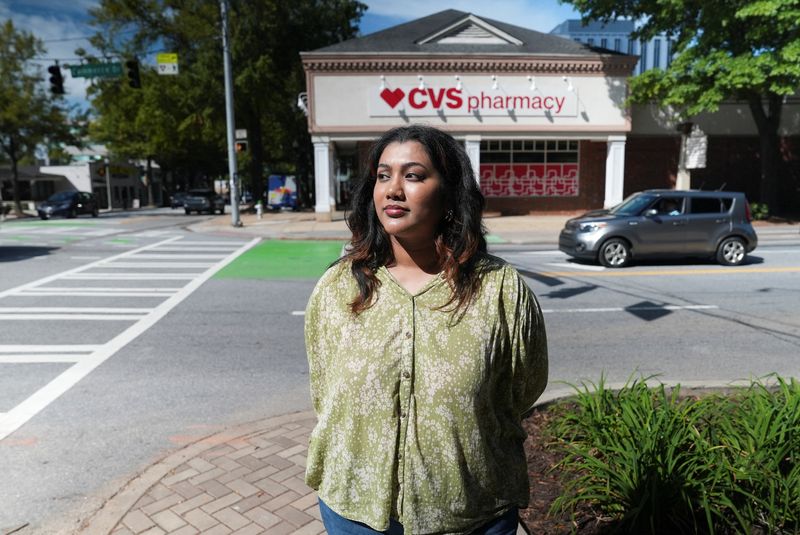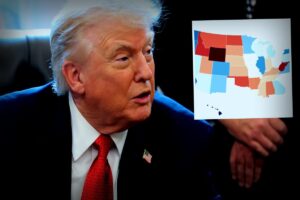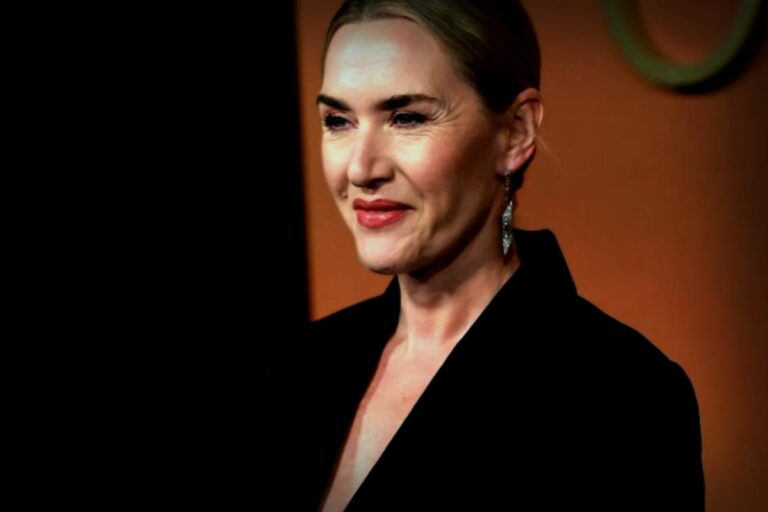By Amina Niasse
NEW YORK (Reuters) – With many Americans heading to their local pharmacies for COVID-19 vaccinations, roadblocks and misunderstandings are popping up, thanks to the latest U.S. guidelines that have removed broad support for the vaccines. These changes have left vaccination rates at their lowest since these shots were first introduced.

According to the latest report from analysts at IQVIA, immunizations saw a national drop of around 25% for the four weeks ending on October 3.
Take Steven Thompson, a 41-year-old financial worker from Salt Lake City. He usually gets his COVID shot through his employer’s health plan. However, in September, during a visit to Walgreens, he was informed he needed a prescription. That’s because states like Utah, Georgia, and Louisiana had been requiring it while waiting on CDC guidance.”

Thompson’s children’s pediatrician ended up sending prescriptions to Walgreens directly, which required a doctor’s visit beforehand.
“I absolutely dread going to the doctor or any situation where I’m unsure about costs,” he expressed, adding that he’s now hesitant about getting a shot unless local infection numbers spike.
Increased Confusion Among States
Interestingly, Utah allowed pharmacists to give shots without prescriptions in late September, and earlier this month, Georgia and Louisiana even dropped the prescription requirement. A Walgreens representative stated that prescriptions were no longer necessary.
Initially, COVID shots were highly recommended for anyone in the U.S. wanting one. However, the CDC has since scaled back this widespread support, advising individuals to first consult with healthcare providers.
This change followed the FDA’s authorization of updated shots exclusively for those 65 and older or those at highest risk for severe illness, while Robert F. Kennedy Jr., a well-known figure in anti-vaccine circles, now heads the Department of Health and Human Services.

Nadia Hicks, a 31-year-old communications manager residing in Atlanta, was shocked to find out she required a prescription to get vaccinated at a Publix pharmacy last month. As someone with asthma, she consulted with her doctor to secure one.
“It’s super stressful since it makes you wonder… is it essential to get vaccinated now?” she remarked, noting that she never received the typical vaccine notifications from her healthcare provider.
A spokesperson from Publix confirmed that its pharmacies in Georgia could now administer COVID shots without a prescription.
Health insurers largely depend on CDC guidelines, informed by its expert advisers, to determine their vaccination coverage. However, Kennedy has significantly altered that advisory board with individuals who align with his controversial stance on vaccines. This shift has prompted some states to question the scientific basis of CDC guidelines and develop their policies. Major insurers have confirmed that they will continue covering the vaccine through 2026.
“People hear a lot from the FDA, CDC, health departments; there are so many differing messages regarding what the actual recommendations are,” pointed out Dr. Aaron Milstone, a pediatric infectious disease specialist at Johns Hopkins Health System.
Comparative Vaccination Rates
In several European nations, Canada, and Australia, guidelines around the COVID vaccine have mainly been limited to older adults and those with significant risks of severe disease. Data from August 2024 to March 2025 showed that the midpoint vaccination rate for individuals over 60 across 21 EU countries sat at 8.7%, which is notably lower than the U.S. rate of about 23% for the same age group.
COVID-related hospitalizations remain a challenge for the healthcare system, remarked Jodie Guest, an epidemiology professor at Emory University. “The evidence clearly underscores the importance of these vaccines in safeguarding individuals and those around them, particularly vulnerable groups,” she stated.
In an interview, CVS Health’s Chief Medical Officer, Amy Compton-Phillips, highlighted that the demand for both COVID and flu vaccines has been less than what it was last year. “It’s a tough spot now since consumers are looking for trustworthy organizations,” she mentioned.
CVS Health, operating one of the country’s largest pharmacy chains, advises that they provide the vaccines nationwide without requiring a prescription.
Pharmaceutical giants Pfizer and Moderna produce COVID vaccines using messenger RNA technology, which Kennedy and his associates have raised concerns about, despite robust scientific backing. Meanwhile, Novavax and French company Sanofi distribute more conventional vaccines.
The lag in official CDC guidance following the more limited FDA approval has created widespread confusion for consumers and local independent pharmacies, accounting for about a third of U.S. pharmacies.
Roger Paganelli, a pharmacist from Mt. Carmel Pharmacy in New York City, pointed out that many pharmacists now exercise caution about promoting vaccines not approved by the FDA, fearing insurers may deny coverage.
Concerns also exist regarding loss of legal protections that prevent them from facing lawsuits from patients, shared Paganelli, who intends to keep administering the vaccine.
According to three pharmacy experts, the CDC’s advised interactions with patients act as a hurdle for vaccination uptake, especially in low-income, underserved areas where quick walk-in services are common.
Dr. Allison Hill from the American Pharmacists Association confirmed, “Currently, pharmacies are mainly offering only flu vaccines, as we’ve been constantly shifting our policies around COVID-19.”
(Reporting by Amina Niasse in New York; Additional reporting by Jayla Whitfield-Anderson in Atlanta, Michael Erman, Michele Gershberg in New York, and Julie Steenhuysen in Chicago; Editing by Caroline Humer and Bill Berkrot)




















